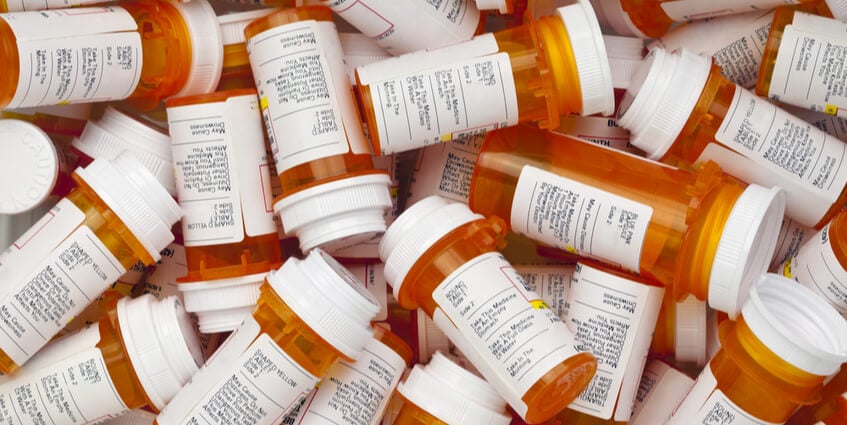Substance Abuse Treatment Programs for Troubled Girls

Teenage substance abuse is a family disease. When you discover that your daughter is using drugs or alcohol, it is typical to experience a wide array of painful feelings. It is also customary to be flooded with questions you don't currently have immediate answers to. Nevertheless, try to keep a level head. Blaming yourself or your daughter is not constructive and will drastically worsen matters.
John 11:25 "Jesus said to her, “I am the resurrection and the life; he who believes in Me will live even if he dies,"
What Is Substance Abuse Disorder?
"Substance Use Disorder" is an all-encompassing term used to depict a type of drug-related disorder wherein the user persists in using a drug despite its usage negatively impacting their overall quality of life.
Ten classes of drugs are classified as substances that can cause substance abuse disorder. They are as follows:
- Stimulants (these include: Amphetamines, cocaine, methamphetamines, Ritalin, etc.)
- Marijuana Caffeine Inhalants (these include the huffing of Paint thinner, air dusters, and industrial glues)
- Opioids (these include: Prescribed drugs such as fentanyl, morphine, and oxycodone)
- Hypnotics, sedatives, anxiolytics (e.g., Lorazepam, secobarbital)
- Tobacco (These include: cigarettes, vapes, and chewing tobacco)
- Other (These include non-narcotic substances that can still harm the user's body and overall health, e.g., anabolic steroids.) Hallucinogens (Eg, magic mushrooms, LSD, DMT, etc.)
It's important to remember that whether a drug is illicit or prescribed makes no difference in its classification as a substance-abusing behavior. As we have already covered above, most of the most dangerous drugs teens use are legal, non-illicit substances.
GET THE APP and BE TRANSFORMED INTO THE IMAGE OF CHRIST!
GET THE APP NOW!Romans 3:24, 28 "being justified as a gift by His grace through the redemption which is in Christ Jesus; For we maintain that a man is justified by faith apart from works of the Law."
The Teenage Opioid Epidemic
The most dangerous of the ten classified substances included in the diagnosis of substance abuse disorder are opioids. The most recent findings show that opioid overdoses have more than tripled in the past twenty years—the most affected demographic being teenage girls.
Galatians 5:4 "You have been severed from Christ, you who are seeking to be justified by law; you have fallen from grace."
According to Yale School of Medicine's most recent findings on the subject, teens have mostly succumbed to opioids via unintentional overdosing. The study also found that, due to the overwhelming prevalence of opioids, teens were as likely to acquire them in their families' homes as they were to get them from a friend or peer.
Romans 4:2 "For if Abraham was justified by works, he has something to boast about, but not before God."
Other related studies on teenage opioid abuse and overdoses have also found:
- Almost 9,000 teens have died from opioid-related overdoses since 1999
- Older adolescents (15-18) are more likely to overdose and suffer opioid-related fatalities.
- Females are the most at-risk when it comes to opioids (the US. Centers for Disease Control and Prevention's latest study found that opioid-related overdoses shot up 15% for males and 35% for females between their previous report
While these findings are startling, the more accurate numbers are much worse in the post-COVID era. The CDC has yet to publish findings since COVID-related sanctions have taken place. However, it is widely held among mental and behavioral health experts that the restrictive nature of COVID sanctions has significantly worsened the mental health of American teens.
With their mental health-related issues exacerbated, drug use, and therefore, opioid abuse, has also deepened among teenage girls.
Substance Abuse Treatment Programs for Adolescents
(The following comes from National Institute on Drug Abuse's Web Page titled, Evidence-based Approaches to Substance Use Disorders)
Researched proof sustains the effectiveness of various substance abuse treatment methods for teens. Examples of specific evidence-based approaches are described below, including behavioral and family-based interventions and pharmaceuticals.
1 John 4:17 “By this, love is perfected with us, so that we may have confidence in the day of judgment; because as He is, so also are we in this world.”
Each method addresses specific characteristics of adolescent drug use and its outcomes for the individual, family, and society.
For any intervention to be sufficient, the clinician providing it must be trained and well-supervised to ensure that they adhere to the instructions and guidance described in treatment manuals.
Most of these treatments have been tested over short periods of 12–16 weeks, but for some adolescents, longer treatments may be warranted; such a decision is made on a case-by-case basis.
The provider should use clinical judgment to select the evidence-based approach that seems best suited to the patient and their family.
Galatians 3:24 "Therefore the Law has become our tutor to lead us to Christ, so that we may be justified by faith."
Before seeking treatment for your child, you must know what is going on in their life. How long have they been experimenting? Are they in danger of developing a substance use disorder, or worse, overdosing?
Answering these questions is necessary to develop a deeper understanding of the situation and know how to proceed.
As a parent, knowing the signs of teen substance use can help you decide whether your child needs professional intervention.
